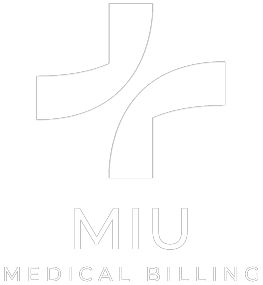Introduction
Revenue Cycle Management refers to the financial processes in the healthcare system that stabilize providers’ finances while leaving them to do what they do best – providing service to patients. RCM billing services are essential for timely and smooth revenue, and the process begins with registration and ends with the payment method. It confirms correct invoicing, proper reimbursement, and low revenue loss and, for that reason, is badly needed by healthcare companies.
1. What is RCM Billing?

RCM is the practical management of the financial aspects of healthcare services, ranging from when a patient comes into contact with a healthcare provider to when the provider is fully paid.
Key components of RCM include:
- Patient Registration
- Charge Capture
- Claim Submission
- Denial Management
- Payment Posting
Why RCM billing is critical:
RCM billing plays a critical role in stabilizing the finances of the given healthcare practices. They minimize the risk of claim rejection, guarantee patients’ compliance with payer requirements, and improve cash flow so the healthcare providers can concentrate on the quality of services they provide to the patients.
2. Medical Billing RCM Cycle: Key Stages
The medical billing RCM cycle can, in a way, be divided into several stages and form a loop, which, in the images below, is crucial to the medical revenue cycle.
1. Prior authorization or Appointment Services
To avoid encountering any unexpected cancelations, it would be wise to check on insurance clearances for the clients before giving them an appointment to undergo a test or come for a consultation.
2. Charge Capture and Coding
Document all services very well and, when using codes, ensure they are correctly coded to prevent billing issues.
3. Claim Submission
File greens that are pure claims with insurance providers so that they can be quickly passed.
4. Payment Posting
Pay bills, check for any outstanding differences, and adjust them immediately.
5. Denial Management
Try to disprove the claims by reviewing them and resubmitting them only when corrected.
6. Patient Billing and Collections
Generate proper bills for patients and or track and monitor unpaid balances.
Each stage of the RCM cycle for medical billing is vital, ensuring healthcare providers get paid for their services on time.
3. Availity RCM: Enhancing Billing Efficiency
Availity RCM has, therefore, emerged as a powerful tool for healthcare providers to manage their revenue cycles efficiently and effectively.
Key features of Availity RCM include:
- Insurance eligibility verification.
- Automated claim scrubbing to minimize errors.
- Centralized dashboards for tracking claims and payments.
These features of availity ensure accurate billing, timely reimbursement, and less revenue leakage.
4. RCM in Medical Billing: A Closer Look
A parameter of medical billing is reimbursement, and RCM ensures that providers recover quickly and on time.
Role of technology and software in RCM:
Tools such as Availity RCM automate the process, eliminate human errors, and provide real-time performance analytics.
Challenges in managing RCM:
- Complex payer rules and frequent regulatory changes.
- High denial rates due to incorrect data or coding errors.
- Rising patient financial responsibilities.
Solutions:
- Investing in robust RCM software.
- Training staff on coding and billing best practices.
- Regularly auditing processes to identify and rectify inefficiencies.
5. Understanding the Different RCM Levels

RCM levels refer to the phases or steps of the general revenue cycle.
Overview of RCM Levels:
- Level 1: Taking new Patients and confirming insurance benefits to determine payment.
- Level 2: Legibility of textual records and correctness in translating them into codes.
- Level 3: New claim filing and follow-up on the claims.
- Level 4: The two key areas, payment reconciliation, and denial management, are highlighted here.
- Level 5: Optimization of business processes using analysis and actionable insights information technology.
The levels are cumulative, and implementation of all of them establishes a complete system that will allow the maximum reaching of the targeted revenue and work capacity.
6. Behavioral Health RCM: Specialized Billing Solutions
As for behavioral health RCM, there are some considerations to bear in mind, such as
- Disparate payer regulations and particular billing codes.
- Identifying all procedures associated with mental health treatment, meaning psychotherapy sessions or a psychiatrist’s consultation.
- Managing Moving through HIPAA guidelines to procedure telehealth billing and insurance confirmations
RCM solutions continued to meet the increasing need for mental health capabilities in teaching institutions on time.
7. The Future of RCM Billing Services
The future of RCM billing services is something innovative, and the trends observed include the following:
- Automation and Artificial Intelligence.
- Usage of intelligence for optimizing pattern recognition and early claim denial
- Clients including Availity RCM with their integrated platforms.
- The increased weighting of billing is closely related to patient on time.
Therefore, RCM services will still be applicable and will evolve with the development of the healthcare industry to address issues and ensure that organizations manage to address issues and optimize revenue.
Conclusion
RCM billing services have become necessary for healthcare providers, guaranteeing reimbursement and efficient financial processes. For instance, the medical billing RCM cycle, or Availity, significantly improves revenue collection.
Realizing the various dynamics of RCM in medical billing, healthcare organizations can handle some issues and improve patient services. Only with modern RCM solutions is sustainable financial prosperity guaranteed in the dynamic health sector.




